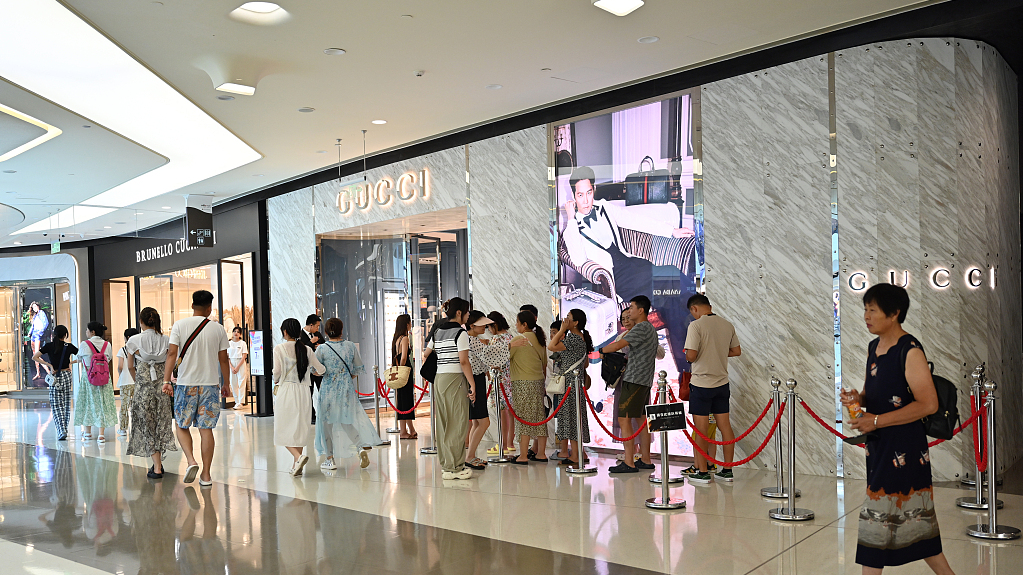Editor note: Bruno Lannes is a senior partner at Bain & Company with over 20 years of strategy consulting experience, especially in consumer goods and retail industries. Lannes is a recipient of the Shanghai Magnolia Silver Award. The article reflects the author's opinion, and not necessarily the views of CGTN.
The first China International Supply Chain Expo is currently underway in Beijing. The event has been seen as a platform for companies around the world to develop greater collaboration with each other to enhance the healthy development of the global supply chain.
What role does China play in strengthening the global supply chain? Let's delve into this question.
In April 2022, I wrote an article together with Weiwen Han and Joanna Lu titled "How to behave like a Chinese brand," in which we articulated that the most successful multinational companies in China were adopting the "4D Model":
• "Design" for Chinese consumers
• "Decide"in China
• "Deliver" at "China speed" ...
• ... in a "Digital" way
The article remains relevant today, and is being largely reproduced:
Since then, the 4D model has shifted the fortunes of a select class of foreign brands, generating interest in how to adopt the 4D mentality.
While a procession of multinationals in both the retail and consumer products sectors have beaten a retreat from China, others are staying and surfacing as winners in the world's largest and most important consumer market.
In the April 2022 article, we also explained that there is a "go-big-or-go-home" imperative for multinationals in China:
In fact, if there were a fifth "D," it would be "Dare to be big."
Despite a recently slowing economy, China is the world's largest consumer market and remains the hottest consumer story. It is not a stretch to say that the next China is China.
Here, I would like to emphasize the importance of speed, often labeled as the "China speed" to reflect the unique characteristics of this market. I would also like to emphasize the importance of China, not just for the China market itself, but also for the world.
Both topics are critical to explain China's role in strengthening global supply chains.
China speed
We wrote, "There are many stories that show what it looks like to 'deliver at China speed.' Consider the build-out of hospitals in Wuhan over a few short weeks during the earliest days of the COVID-19 pandemic.
There is also the Tesla experience. Starting with an empty piece of land in January 2019, the iconic electric car company built a finished factory by December and had cars rolling out from its assembly line by December 30, demonstrating that multinationals in China can also move at the China speed.
Once again, it is impossible to overestimate the importance of speed in China. Chinese consumers are quick to adopt new products or embrace a new channel or platform.
China's new unicorns – fully digital native – can test 10 ideas at the same time and rapidly roll out the ones that work. With China's size and available platforms, brands can reach millions of consumers quickly and effectively – but the key is the speed in innovation and reaction to new developments.
The "China speed" has also been made possible by the ecosystem model of organization and cooperation among companies.
Each company focuses only on what it is good at and relies on other companies to do what they are good at, in a win-win collaboration model.
Alibaba and other Chinese digital platforms were the first to implement such an ecosystem-based operating model at scale.
In his 2018 book on Alibaba, former Chief Strategy Officer Ming Zeng described the model behind the phenomenal growth and success of Alibaba as a smart business that has resulted from the powerful combination of a coordinated network of millions of participants and data intelligence – a combination that drives efficiency and speed.
China for the world
Finally, the 4D model is not just for succeeding in China, but is also for giving back to the global organizations. The most effective multinationals are not only making China a "must-win" market but also are using it as a testing ground for everything from product designs to route-to-market approaches that can be replicated elsewhere in the world.
Historically, all innovations for L'Oreal's Kerastase brand have been developed in Paris, where the brand is based. However, the Kerastase China team has developed a cleansing clay based on Chinese consumer and stylist insights around the need for a product that deeply cleans the hair and scalp.
The product has a high concentration of clay and is sold exclusively in salons. It has been successfully introduced to Europe after its China debut.
Giving back to headquarters is critical for multinationals to benefit from what they learn in the world's biggest market – and to continue earning trust from the global organizations. Here, too, there are abundant signs of companies getting it right – and in different ways.
AB InBev sets the standard for exporting what succeeds in China. The beverage company's China lessons have influenced its global digital transformation agenda.
China is where consumer goods companies can hone their ability to work with key opinion leaders, to allocate budgets across different platforms and types of digital campaigns, and to understand how to profit from the likes of Douyin before they become global powerhouses – and before the competition.
These consumer goods companies and retailers go to China as multinationals and, by adopting a 4D model, learn how to become dynamic scale insurgents capable of winning there and everywhere.


